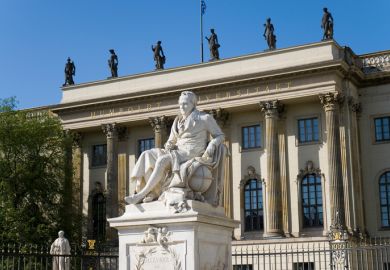On Sunday 2 April 1911, at a time when the campaign for the parliamentary vote for women was nearing its height, a census was taken in Britain. A number of suffrage organisations urged their members to boycott this official fact-gathering exercise; perhaps most famously, Emily Wilding Davison would hide overnight in a cupboard in the Houses of Parliament to do so. Why, argued campaigners, should women comply with the law when they were denied political citizenship in a supposedly “mature” democracy? Although a number of previous texts have made reference to the 1911 census boycott, none has considered it in the detail that Jill Liddington’s highly readable book does.
The battle over the census, Liddington argues, embodied two rival concepts of democracy – “government by the people” versus “government for the people”. The latter was upheld by reforming Liberal government ministers, such as John Burns and David Lloyd George, and the former by suffrage leaders including Emmeline Pankhurst, founder of the Women’s Social and Political Union, and Charlotte Despard, leader of the Women’s Freedom League, both supporters of the boycott. Here, Liddington has weighed a host of new data about the boycott, thanks in large part to the decision of the National Archives to make the schedules of the 1911 census available to the public online. Unlike their predecessors, these schedules can now be read as they were written, generally filled in by the male head of household – but with, in some cases, defiant statements or scribbling by women who objected. Drawing on a wide range of documentary sources to complement these schedules, including diaries and memoirs, Liddington’s study focuses on the 572 census evaders found in England.
Schedules can now be read as they were written, generally filled in by the male head of household - but some with defiant statements by women
She begins by introducing Despard and Burns, two key players in the story. Despard, born in 1844 into a well-connected naval family, converted to socialism when she relocated to the London working-class district of Battersea. Burns, one of 18 children growing up in a London slum dwelling, became Labour MP for Battersea in 1892. His growing Liberal loyalty was rewarded in 1905 when Henry Campbell-Bannerman, the prime minister, appointed him president of the Local Government Board, making him the first working-class government minister. When another Liberal, Herbert Asquith, replaced Campbell-Bannerman as prime minster in 1908, Burns retained his post while Lloyd George was promoted to Chancellor of the Exchequer. Thus the radical reforming side of Liberalism was strengthened and the stage set for the two concepts of “democracy” to be played out.
Liddington’s focus is on four main areas where the boycotters were particularly widespread – London’s bohemian suburbs of Hampstead and Kensington and Chelsea, and two major urban areas, the Bristol-Bath region and the Manchester region. In Hampstead, she highlights two suffrage households – those of Henry and Margaret Nevinson, and Noel and Jane Brailsford. Henry Nevinson, who like Noel Brailsford was a journalist, saw himself as a “new man”, supporting radical causes such as votes for women. In his census return, he duly provided all the necessary data for himself, his son and two domestic servants, but made no mention of his wife or daughter. On census night, as the WFL and WSPU had encouraged, he went to the Aldwych Skating Rink where some 500 female and 70 male evaders had gathered. Ever the “gentleman”, early the next morning he brought roses to Jane Brailsford – it was her birthday – only to find her very angry. Her husband Noel had identified himself as head of the family on the census form. “She scratched it out & wrote ‘Nonsense’,” he recalled.
In the Bristol area, opposition to the census was similarly well organised, under the charismatic leadership of Annie Kenney, a WSPU activist. An empty house at 12 Lansdown Crescent, Bath was rented so that women could stay there and avoid being counted. As in London, various forms of entertainment were offered. “Grace Tollemache played the violin and AEthel accompanied on a piano,” recorded Mary Blathwayt. “Mrs. Forbes Williams gave a lecture on Clairvoyance.” The Manchester region too had local clusters of boycotters, some of whom gathered in an empty mansion rented in Denison Road near Victoria Park for that purpose.
Keen to consider information from a broader range of communities, Liddington sweeps from Teesside down to the Thames, hunting for additional sources able to throw light on the census evaders. A few do exist, such as the minutes of the WFL branch in Middlesbrough, where we find boycotters Alice Schofield-Coates and her sister-in law Marion Coates-Hanson. But in some instances, statements about the event bear little resemblance to the reality. This is the case for an account by WFL member Emma Sproson in Wolverhampton. “We packed numbers of women in places w[h]ere they would not be counted,” she recollected, “…and in my own case after my husband had filled up the paper [schedule] I took it out of the envelope and cut out all the females that slept in our house that night; in due course the collector [enumerator] called for the form.” However, this account does not tally with the schedule itself, which reveals that Emma’s entry was compliant, apart from the omission of her birthplace and occupation, with no evidence whatsoever of unlawful snipping. How can this be explained? Liddington speculates that Emma’s memory may have played tricks over the years so that she “remembered” what she would have liked to have done on census night. Or it may be that the Sprosons, who were members of the Independent Labour Party, were not in sympathy with the boycott. Certainly neither the ILP nor the National Union of Women’s Suffrage Societies, led by Millicent Garrett Fawcett, recommended that their members join in.
After the census schedules had been collected, the evaders waited to hear if they would be arrested for flouting the law. Unbeknown to them, Burns had agreed with the home secretary that only a police estimate of the number of boycotters in any one building was necessary. Any sense of optimism the census evaders felt about the political impact of their actions soon evaporated, since Asquith, a staunch anti-suffragist, remained unmoved. It was Lloyd George’s National Insurance Bill, often regarded as one of the foundations of modern social welfare in the UK, that would receive Royal Assent later that year, not the elimination of sex discrimination in parliamentary voting. In this instance, “government for the people” did not include acknowledging the justice of the women’s cause.
The rich data discussed in Vanishing for the Vote are key to this fascinating work. Although only a few of the stories of the probable 3,000-4,000 boycotters can be told, they vividly evoke the spirit of the age. Further, the inclusion of a Gazetteer of the census schedules of 500 campaigners, compiled jointly with the independent scholar Elizabeth Crawford, is a mine of information. If there is a disappointment here, it lies not in Liddington’s text but in the quality of the reproductions, especially of the census schedules that are so critical to the story. Cramped and smudgy, they are difficult to read even with a magnifying glass. Surely in this digital age a scholar’s work should be better served.
The author
“I’ve always been distinctly determined – or, friends might say, obstinate,” observes Jill Liddington, honorary research fellow at the University of Leeds’ Centre for Interdisciplinary Gender Studies.
“As a teenager in the early 1960s musing on career options, I briefly plumped on becoming an architect and wrote away for information. The leaflet I was sent spelled out, my memory suggests, that the lengthy training period was unsuitable for women. With such rebuffs, my path to feminism was set.”
Liddington took her undergraduate degree at Keele University. “New universities were just opening up and I was fortunate enough to go to Keele – then with a four-year degree course and shared foundation year. Its total newness, and the opportunity to study non-school subjects such as politics, opened up an enthralling world to me – and wonderful friends.”
Sheila Rowbotham’s 1973 book Hidden from History: 300 Years of Women’s Oppression and the Fight Against It, Liddington recalls, “had a tremendous impact on young feminists such as myself. Soon after, we all watched the suffragette drama Shoulder to Shoulder on BBC TV – and marvelled at our forgotten history.”
Liddington recalls: “I then moved up to the Manchester area and Oldham beyond. I wanted to find out more about local suffragette Annie Kenney. By dint of some enthusiastic digging and helped by Oldham’s wonderful local history librarians, I discovered that Annie Kenney [a working-class campaigner for women’s suffrage and trade unionist] had worked in the very mill next door to where I lived.
“I was set. These Votes for Women campaigners came from somewhere; they belongedsomewhere. Whose other local stories could I unearth?” The result of Liddington’s research, she says, was the 1978 book One Hand Tied Behind Us: Rise of the Women’s Suffrage Movement, which she co-wrote with Jill Norris. “I became passionate about researching ‘Votes for Women’ – everywhere!”
For a quarter of a century starting in 1982, Liddington recounts, she was “fortunate” to work in the Department of Extra-Mural Studies (which later became the School of Continuing Education) at the University of Leeds, where she would be appointed reader in gender history. The department had earlier been, she notes, “the seedbed for E. P. Thompson’s The Making of the English Working Class. It was an academic space that did indeed encourage its staff, all of us teaching adult students off-campus, to experiment with the new, the bold, the adventurous. Hence, in my case, women’s history. There was deep sadness when, about a decade ago, the school was closed. At its best (for example, our access courses), our teaching really did change lives.”
Liddington says she owes “a great research debt to the Fawcett Library, which I first visited in 1976 when its sad decline seemed inevitable. But its magnificent collections were saved, and it went on to become the Women’s Library.
“Like so many other historians in the field, I was caught up in recent battles to save the library once again. In this campaign, the wider acceptance of women’s suffrage history made a real difference. I’m delighted it has found a secure home at the London School of Economics.” Recently, she adds, she was pleased to be invited to present a copy of Vanishing for the Vote to the library.
Would Liddington have boycotted the 1911 census? “Possibly. I try to tease out in the book what a hard call it was. Women’s citizenship claims, or providing information to assist future health and welfare reform? Democracy for, or democracy by? Political duties, or political rights? A hard call indeed!”
Karen Shook
Vanishing for the Vote: Suffrage, Citizenship and the Battle for the Census
By Jill Liddington
Manchester University Press, 304pp, £65.00 and £16.99
ISBN 9780719087486 and 87493
Published 2 April 2014
Register to continue
Why register?
- Registration is free and only takes a moment
- Once registered, you can read 3 articles a month
- Sign up for our newsletter
Subscribe
Or subscribe for unlimited access to:
- Unlimited access to news, views, insights & reviews
- Digital editions
- Digital access to THE’s university and college rankings analysis
Already registered or a current subscriber?





